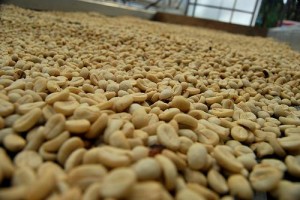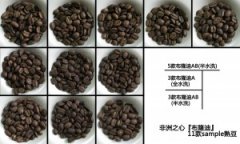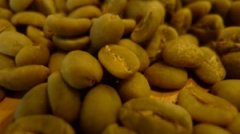Panamanian coffee, the king of coffee price ratio in Central America.
Panama coffee

Panama coffee growing environment
Panama is a small country located in the heart of the American continent. The waters of the Atlantic and Pacific oceans wash over its beaches.
Panama is located at 9 degrees north latitude, at the confluence of the Central Mountain Range, where Mount Baru, one of the highest volcanoes in Central America, is located.
With an elevation of more than 11,400 feet, the surrounding soil is rich in nutrients and fertile soil, providing sufficient conditions for the planting and cultivation of Panamanian coffee.
These uplands have the right microclimate, soil, temperature and altitude for the planting, cultivation and harvesting of a wide variety of specialty coffees. These coffees have jasmine, citrus, ripe fruit, berry, caramel, special sweetness, vanilla, chocolate and many other flavors.
Unique coffee.
The microclimate of the Panamanian highlands is the most important resource that makes Panamanian coffee unique.
The most important resource that makes Panamanian coffee unique is its microclimate. Panama's east-west environment allows cold air currents to flow through the Central Mountains and converge above 6500 feet, thus creating a variety of microclimates in the Boquete and Volcán-Candela regions, making them the main producers of Panamanian coffee. These specialty coffees are grown on nutrient-rich, well-balanced soil in the Baru volcano region.
Panamanian coffee is sorted and numbered in small batches designed to be small in volume for optimal management, and the sorting number allows buyers to understand and track information throughout the process.
Due to its small volume, Panamanian coffee products are based on specialty coffee. The country supplies its quality products to specialist stores in countries around the world such as Denmark, England, Greece, Norway, Sweden, South Korea, Japan, Taiwan and the United States.
Panama Coffee-The Best Value for Money Central American Coffee
Panama has emerged as one of the world's best coffee producers since three years ago, surprising countries that have been at the forefront of developer production for many years. Panama's main coffee producing area is in the west, close to the Costa Rican border, producing the best washed coffee. The cold and stable climate at high altitudes in Panama is more conducive to the growth of coffee beans than coffee beans grown at low and middle altitudes. The coffee beans grown here grow slowly, have the strongest and special flavor, and the hardness of the coffee is also the hardest. Coffee beans at high altitudes have the most complete taste, higher alcohol and diversified flavors, such as chocolate, caramel, flower and so on. Warm in the mouth, moderately sour and bitter. Panama's tallest growing bean is one of the most outstanding varieties
BOQUETE Panama is located in Chiriqui province on the border with Costa Rica. It is the origin of Panama's famous GEISHA coffee and is famous for producing high-quality Arabica coffee. TEDMAN & MACINTYRE ESTATE, located 4000 feet above sea level in the mountains of Porgate, originates from two of Panama's earliest coffee families, the TEDMAN family and the MACINTYRE family. In 1925, Canadian fruit merchant Alexander DUNCAN MACINTYRE (ALEXANDER DUNCAN MACINTYRE ) was infected by his brother Joseph and settled in Porgate. In the same year, he married ANGELA ROSAS and bought a manor named "LA CAROLINA" to start growing coffee. Their descendants still own the estate and it has become one of the most famous coffee estates in the area.
In fact, Panamanian coffee has not received due recognition and attention in the fine coffee market. Good Panamanian coffee has always been used by unscrupulous businessmen to imitate Hawaiian kona coffee or even Jamaica Blue Mountain coffee. Panama coffee generally has a low price, but its performance in the cup is often inferior to any famous and even expensive famous coffee producing area. Excellent Panamanian coffee has a bright, pure, medium consistency (taste, body), comfort and mild flavor, and even excellent complexity. In a few years, these excellent quality, affordable premium Panamanian coffees will be popular all over the world!
Panama Fine Coffee Bean Introduction-Geisha
Panama rose summer: rare wild species, world champion of various tasting competitions. Raw beans slender appearance, ripe beans with unexpected citrus fragrance, full of floral aftertaste, sweet fruit. Absolutely unique coffee.
A very rare wild variety originating in Ethiopia, the bean probably derives its name from the coffee bean found near the local village of Guixia; the coffee tree is tall, has slender leaves, is resistant to coffee rust, and has widely spaced branches on the trunk. Raw beans are slender in appearance, ripe beans have strong, rich fruit flavor characteristics. This variety cannot be purchased commercially because of its low harvest.
Important Notice :
前街咖啡 FrontStreet Coffee has moved to new addredd:
FrontStreet Coffee Address: 315,Donghua East Road,GuangZhou
Tel:020 38364473
- Prev

African Burundian boutique coffee beans (Urundi)
Burundian Coffee bears a striking resemblance to neighboring Rwanda, where coffee from the two countries is often confused. Burundian coffee is mainly grown in bourbon, with traditional wet processing of coffee cherries. Its boutique coffee is characterized by elegant sweetness and bright citrus aromas. Origin: Burundi is located in eastern and central Africa.
- Next

The most famous boutique coffee beans in Crystal Mountain, Cuba
Cubita is Cuban coffee, which is mainly exported to Japan, France, Germany, Ireland, Canada and other countries. The cubita coffee entering the Chinese market is all selected from the pollution-free Crystal Mountain coffee beans in the high altitude areas of Cuba, which is a typical Caribbean coffee bean. All the granules of coffee beans are strictly selected according to the standard of sieve 17-19, and the selected coffee beans have large particles and high maturity.
Related
- Guji coffee producing area of Guji, Ethiopia: Humbela, Shakiso, Wulaga
- What is the most expensive variety of Qiloso in BOP multi-variety group?
- How to store the coffee beans bought home?
- Why are Yemeni coffee beans so rare now?
- Ethiopian Sidamo all Red Fruit Sun Sun Santa Vini Coffee beans
- SOE is mostly sour? What does it mean? Is it a single bean? what's the difference between it and Italian blending?
- Is Italian coffee beans suitable for making hand-brewed coffee?
- How to choose coffee beans when making cold coffee? What kind of coffee beans are suitable for making cold coffee?
- Just entered the pit to make coffee, what kind of coffee beans should be chosen?
- Can only Japan buy real Blue Mountain Coffee? What are authentic Jamaican Blue Mountain coffee beans?

